
Helsinki: The Jewel of the Baltic
Discover Helsinki, Finland's vibrant capital, where modernity meets history, and urban sophistication blends seamlessly with natural beauty.
Helsinki, the capital of Finland, is a vibrant city that seamlessly blends modernity with rich historical heritage. Situated on the shores of the Baltic Sea, Helsinki offers stunning coastal landscapes, a myriad of islands, and an abundance of green spaces. The city's unique architecture ranges from neoclassical buildings in Senate Square to contemporary designs like the Kamppi Chapel of Silence. Art and culture enthusiasts will find no shortage of museums, galleries, and theaters. The Ateneum Art Museum and the Finnish National Museum are must-visits for anyone interested in Finnish history and art. Helsinki's design district is a hub for creative minds, featuring trendy boutiques, chic cafes, and innovative design studios. Food lovers will be delighted by Helsinki's culinary scene, which offers everything from traditional Finnish dishes to international cuisine. The city's markets, such as the Old Market Hall and Hakaniemi Market, are perfect spots for sampling local delicacies like reindeer meat, salmon, and Finnish pastries. Don't miss the chance to experience a traditional Finnish sauna, a cornerstone of local culture. With its blend of urban sophistication and natural beauty, Helsinki is a destination that caters to all types of travelers. Whether you're exploring the archipelago by boat, cycling through the city's parks, or enjoying a night out in one of its many bars and restaurants, Helsinki promises an unforgettable experience.
Local tips in Helsinki
- Visit during summer for the best weather and long daylight hours.
- Purchase a Helsinki Card for free public transport and entry to many attractions.
- Explore the city by bike; Helsinki is very cycle-friendly.
- Don't forget to try a traditional Finnish sauna, available in many public and private facilities.
- Take a ferry to nearby Suomenlinna, a UNESCO World Heritage site.
Neighbourhoods in Helsinki
Helsinki: The Jewel of the Baltic
Helsinki, the capital of Finland, is a vibrant city that seamlessly blends modernity with rich historical heritage. Situated on the shores of the Baltic Sea, Helsinki offers stunning coastal landscapes, a myriad of islands, and an abundance of green spaces. The city's unique architecture ranges from neoclassical buildings in Senate Square to contemporary designs like the Kamppi Chapel of Silence. Art and culture enthusiasts will find no shortage of museums, galleries, and theaters. The Ateneum Art Museum and the Finnish National Museum are must-visits for anyone interested in Finnish history and art. Helsinki's design district is a hub for creative minds, featuring trendy boutiques, chic cafes, and innovative design studios. Food lovers will be delighted by Helsinki's culinary scene, which offers everything from traditional Finnish dishes to international cuisine. The city's markets, such as the Old Market Hall and Hakaniemi Market, are perfect spots for sampling local delicacies like reindeer meat, salmon, and Finnish pastries. Don't miss the chance to experience a traditional Finnish sauna, a cornerstone of local culture. With its blend of urban sophistication and natural beauty, Helsinki is a destination that caters to all types of travelers. Whether you're exploring the archipelago by boat, cycling through the city's parks, or enjoying a night out in one of its many bars and restaurants, Helsinki promises an unforgettable experience.
When is the best time to go to Helsinki?
Iconic landmarks you can’t miss
Helsinki Market Square
Experience the vibrant atmosphere of Helsinki Market Square, where local culture, fresh produce, and delicious Finnish delicacies come together.
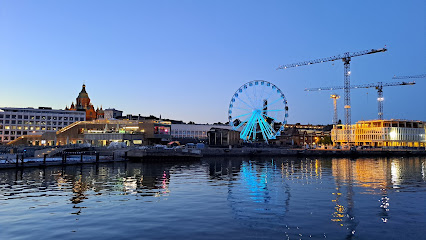
Suomenlinna
Explore Suomenlinna, a UNESCO World Heritage site, where history meets stunning sea views and vibrant cultural experiences in Helsinki.

Senate Square
Explore the stunning Senate Square in Helsinki, a vibrant plaza surrounded by historic architecture and lively events, perfect for sightseeing and relaxation.
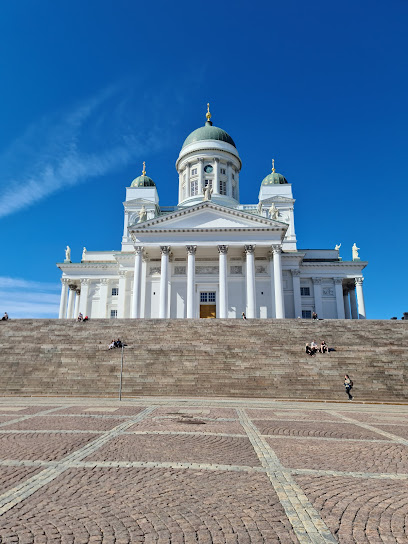
Temppeliaukio Church
Explore the breathtaking Temppeliaukio Church in Helsinki, a unique architectural gem carved into solid rock, renowned for its stunning acoustics and serene atmosphere.
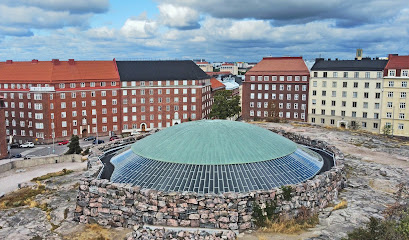
Esplanadi
Discover the serene beauty of Esplanadi, Helsinki's urban park that blends nature, culture, and social life in a vibrant setting.
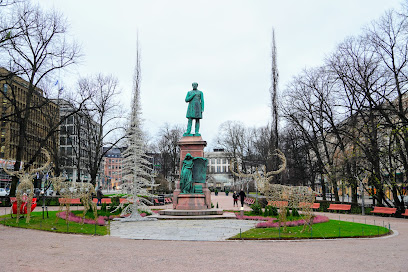
Helsinki Cathedral
Discover the breathtaking beauty of Helsinki Cathedral, a neoclassical masterpiece and a symbol of Finland's rich cultural heritage.
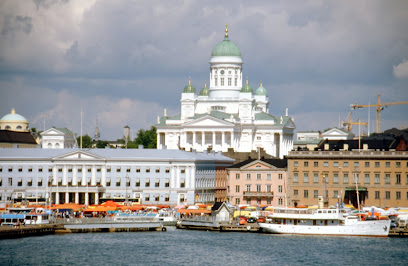
Museum of Contemporary Art Kiasma
Explore the Museum of Contemporary Art Kiasma in Helsinki, where innovative art meets stunning architecture in a dynamic cultural experience.
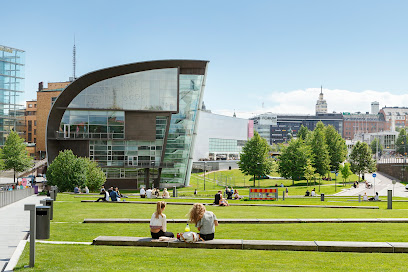
SEA LIFE Helsinki
Discover the captivating underwater world at SEA LIFE Helsinki, home to sharks, rays, and diverse marine life for an unforgettable family adventure.
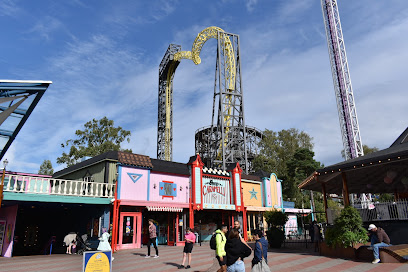
Sibelius Monument
Discover the Sibelius Monument in Helsinki—a stunning tribute to Finland's musical legacy, surrounded by serene parkland and striking natural beauty.
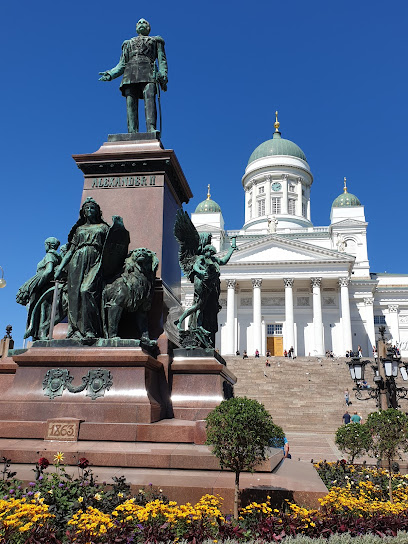
Sibelius Park
Explore Sibelius Park, a serene tribute to Finland's beloved composer, offering lush landscapes and cultural richness in the heart of Helsinki.
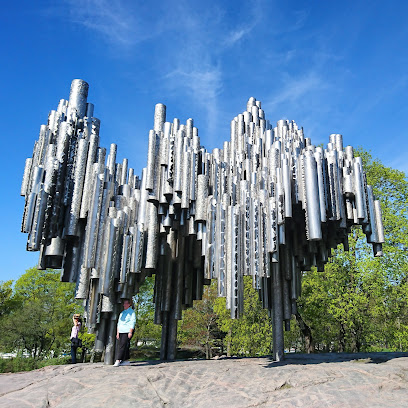
SkyWheel Helsinki
Experience breathtaking views of Helsinki from SkyWheel, the city's iconic Ferris wheel, and enjoy a unique perspective of Finland's vibrant capital.
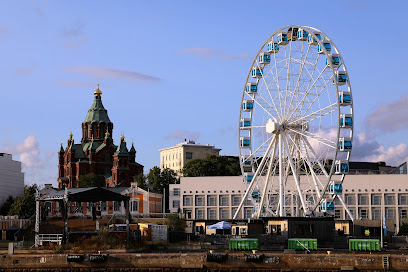
Helsinki Art Museum
Discover the vibrant artistic landscape at the Helsinki Art Museum, a cultural landmark showcasing Finnish and international masterpieces.
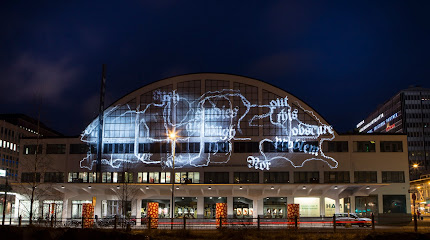
Kamppi Chapel
Experience tranquility in the heart of Helsinki at Kamppi Chapel, a unique architectural gem perfect for reflection and peace.

Vanhankaupunginkoski
Experience the serene beauty of Vanhankaupunginkoski, a wildlife refuge in Helsinki, perfect for nature lovers and cultural explorers.
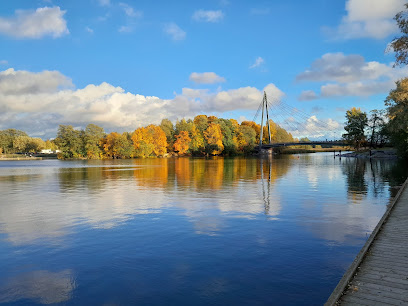
Old Church Park
Discover the serene beauty of Old Church Park, a tranquil green oasis in the heart of Helsinki, adorned with historical monuments and lush landscapes.
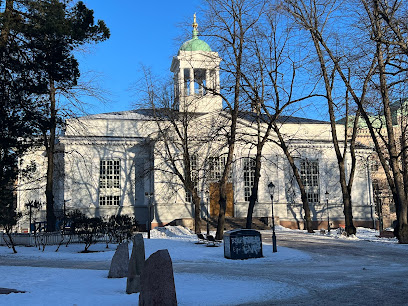
Unmissable attractions to see
Linnanmäki
Discover the excitement of Linnanmäki Amusement Park in Helsinki, where thrilling rides, charming attractions, and unforgettable memories await every visitor.
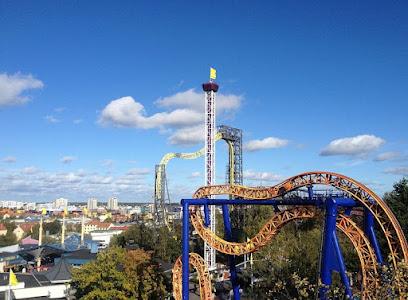
Kauppatori
Discover Kauppatori, Helsinki's vibrant market square, offering fresh local produce, delicious Finnish cuisine, and stunning harbor views.

Suomenlinna
Experience the historical allure of Suomenlinna, a UNESCO World Heritage site, combining stunning landscapes, cultural treasures, and rich history.
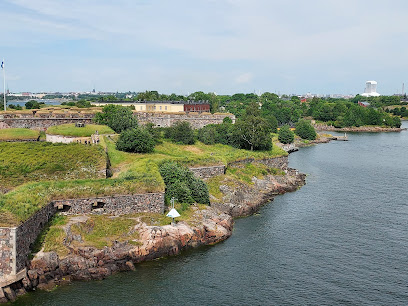
Senate Square
Experience the charm and history of Senate Square, Helsinki's iconic plaza surrounded by stunning architecture and vibrant local culture.
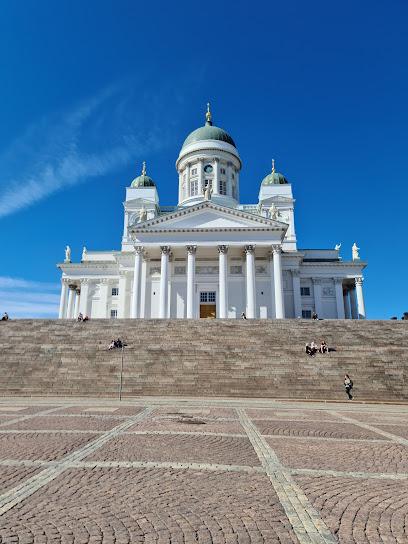
Temppeliaukio Church
Explore the breathtaking Temppeliaukio Church in Helsinki, a stunning rock-hewn architectural marvel with exceptional acoustics and serene ambiance.
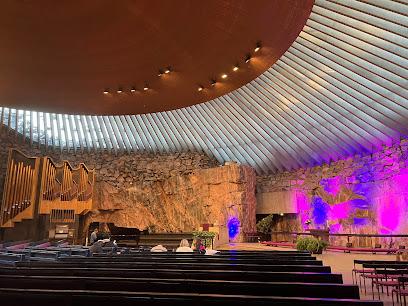
Korkeasaari Zoo
Explore Korkeasaari Zoo in Helsinki, home to over 150 animal species and breathtaking views, perfect for family adventures and nature lovers alike.

Esplanadi
Experience the vibrant charm of Esplanadi, Helsinki's stunning urban park filled with greenery, culture, and delightful local events.
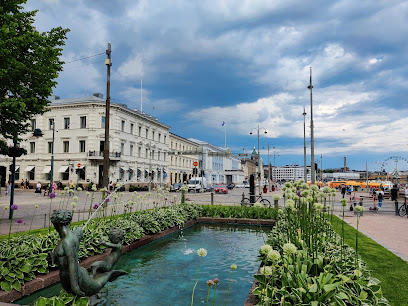
Helsinki Cathedral
Explore the architectural beauty and serene ambiance of Helsinki Cathedral, a historical landmark in Finland's capital that captivates every visitor.
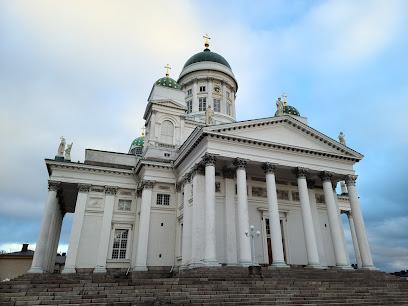
Art Museum Ateneum
Explore the Ateneum Art Museum in Helsinki, home to Finland's largest art collection, featuring masterpieces and contemporary exhibitions.
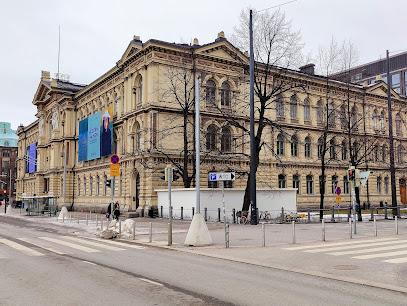
West Terminal 2
Discover the bustling West Terminal 2 in Helsinki, your gateway to unforgettable Baltic adventures and stunning maritime experiences.
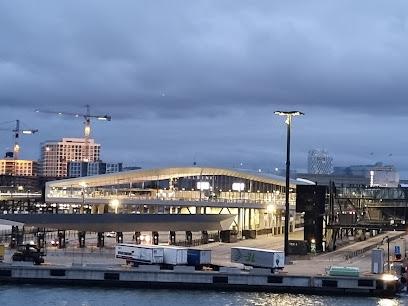
Uspenski Cathedral
Discover the stunning Uspenski Cathedral in Helsinki, a symbol of Orthodox faith and architectural beauty offering breathtaking views and rich history.
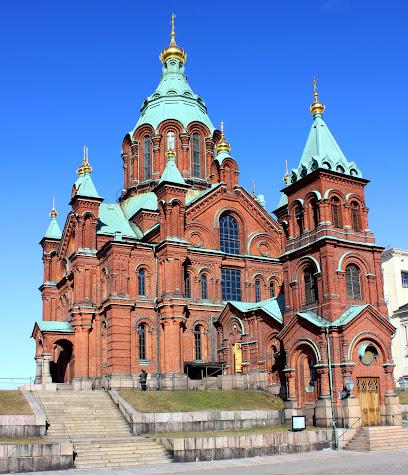
Museum of Contemporary Art Kiasma
Discover the essence of modern art at Kiasma, Helsinki's iconic contemporary art museum featuring innovative exhibitions and cultural events.
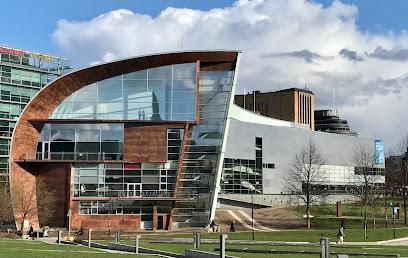
Kaivopuisto
Discover the serene beauty of Kaivopuisto Park in Helsinki, a perfect blend of nature, history, and vibrant local culture.

SEA LIFE Helsinki
Explore the mesmerizing underwater world at SEA LIFE Helsinki, where education and fun come together in an enchanting marine environment.
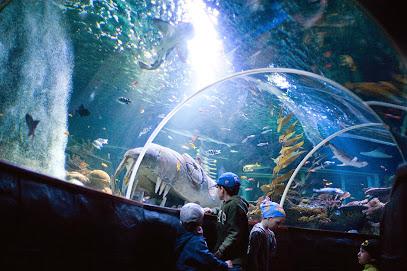
Hakaniemi Market Hall
Discover the bustling Hakaniemi Market Hall in Helsinki, a must-visit spot for fresh food, local delicacies, and authentic Finnish culture.
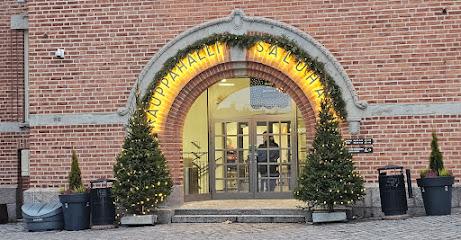
Essential places to dine
Restaurant Zetor
Discover authentic Finnish cuisine at Restaurant Zetor - where rustic charm meets vibrant dining in the heart of Helsinki.
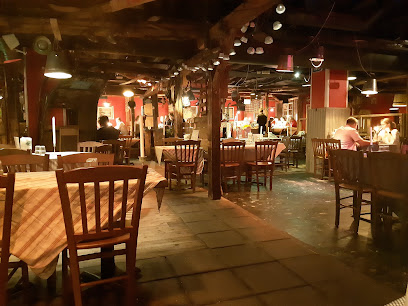
Woolshed Helsinki
Experience authentic Australian cuisine at Woolshed Helsinki, where delicious meals meet an extensive beer selection in a vibrant gastropub setting.

Lappi Ravintola
Discover authentic Finnish cuisine at Lappi Ravintola in Helsinki—where tradition meets modern culinary art in a medieval-inspired setting.
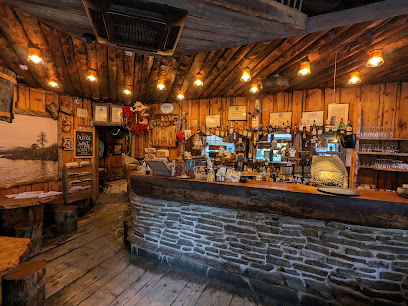
Viking Restaurant Harald
Experience the rich flavors of Finland at Viking Restaurant Harald in Helsinki—where Nordic traditions meet modern dining in an inviting atmosphere.
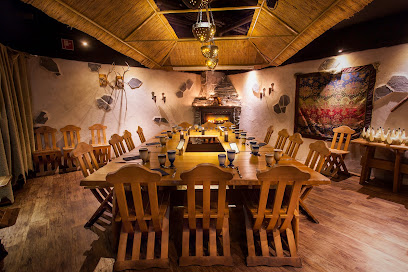
Hills Dumplings
Discover authentic Finnish flavors at Hills Dumplings, where every bite transports you into a world of culinary delight amidst Helsinki's vibrant atmosphere.
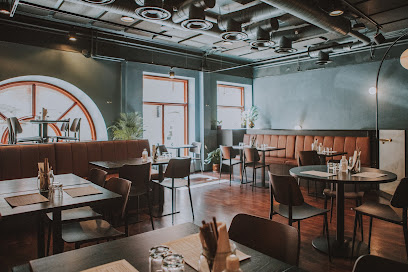
Ravintola Kannas
Experience the essence of Finnish cuisine at Ravintola Kannas, where tradition meets modern dining in the heart of Helsinki.
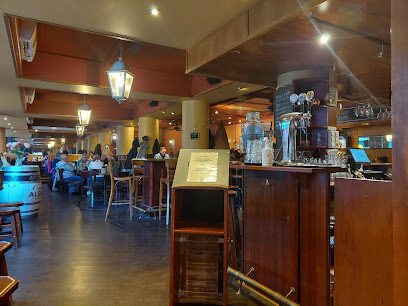
Restaurant Konstan Möljä
Discover the heart of Finnish cuisine at Restaurant Konstan Möljä in Helsinki - a must-visit for food lovers seeking authentic local flavors.
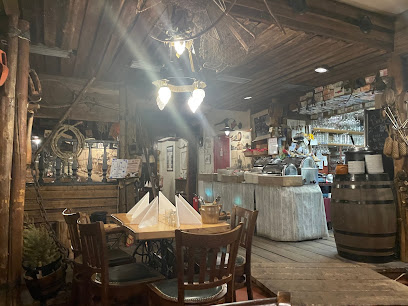
Ravintola Kolme Kruunua
Discover authentic Finnish cuisine at Ravintola Kolme Kruunua - where tradition meets modern flavors in a cozy setting.
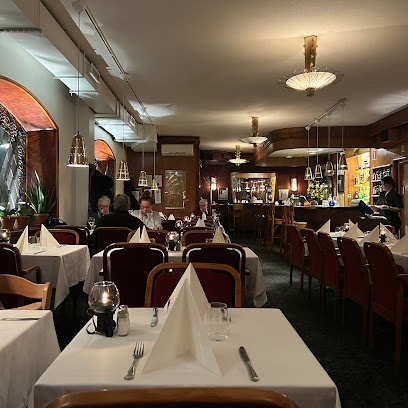
Restaurant Savotta
Discover authentic Finnish cuisine in a cozy setting at Restaurant Savotta in Helsinki.
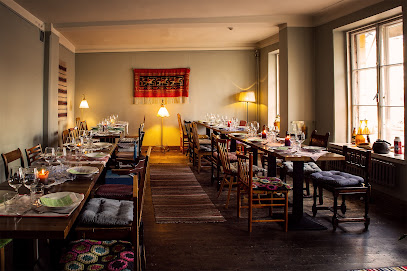
Restaurant Sea Horse
Discover authentic Finnish flavors at Restaurant Sea Horse in Helsinki – where tradition meets culinary excellence in every dish.
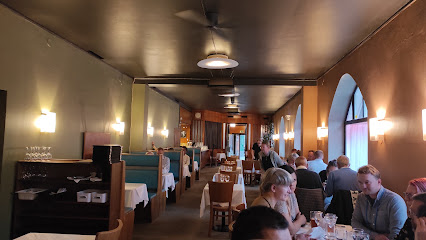
Restaurant Lasipalatsi
Experience authentic Finnish cuisine at Restaurant Lasipalatsi – where tradition meets contemporary flair in Helsinki's culinary scene.

Restaurant Kuu
Experience authentic Finnish cuisine at Restaurant Kuu in Helsinki - where tradition meets modern culinary artistry.
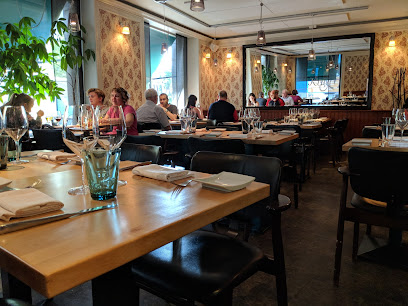
Restaurant Farang
Experience the vibrant tastes of South East Asia at Restaurant Farang in Helsinki – where culinary artistry meets authentic flavor.
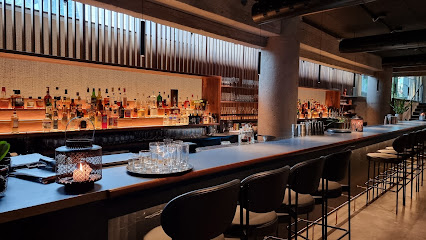
Restaurant HOKU
Discover authentic Hawaiian cuisine blended with Asian influences at Restaurant HOKU in Helsinki.
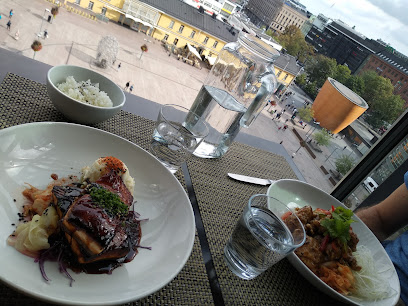
Restaurant Elite
Experience culinary excellence at Restaurant Elite in Helsinki - where modern European flavors meet artistic presentation.
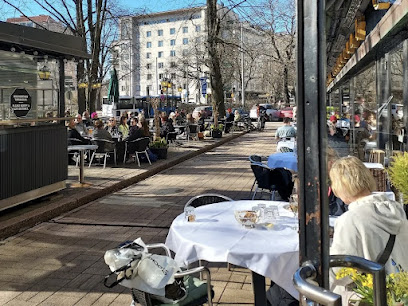
Markets, malls and hidden boutiques
Kamppi Helsinki
Discover Kamppi Helsinki: A premier shopping destination featuring fashion, beauty, dining, and entertainment in the heart of Finland's capital.
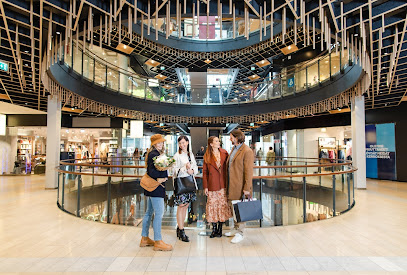
Forum
Discover Forum Shopping Mall, Helsinki's vibrant retail hub with diverse shops, delicious dining, and lively events—perfect for every tourist's shopping adventure.
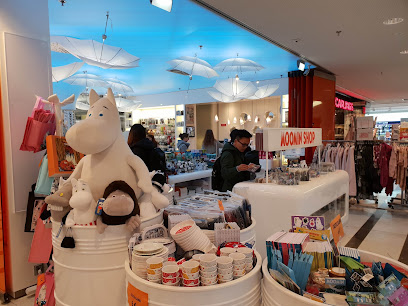
Mall of Tripla
Discover the ultimate shopping experience at Mall of Tripla, Helsinki's largest and most vibrant shopping destination with endless dining and entertainment options.
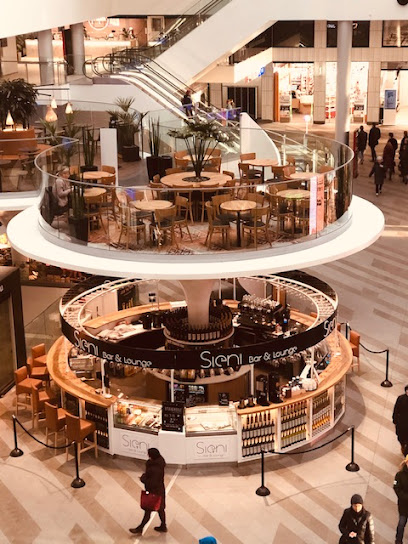
Sokos Department store, Helsinki
Explore the vibrant Sokos Department Store in Helsinki for an unforgettable shopping experience with fashion, cosmetics, and Finnish souvenirs.
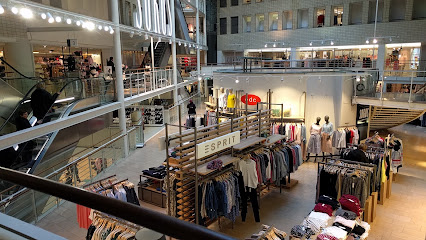
Citycenter Mall Helsinki
Explore the dynamic Citycenter Mall in Helsinki, where shopping, dining, and entertainment come together in the heart of the city.
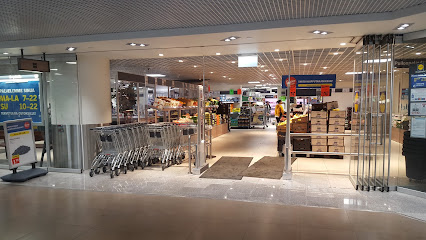
Academic Bookstore
Explore Helsinki's Academic Bookstore: A Literary Gem for Book Lovers and Gift Seekers in the Heart of Finland's Capital.
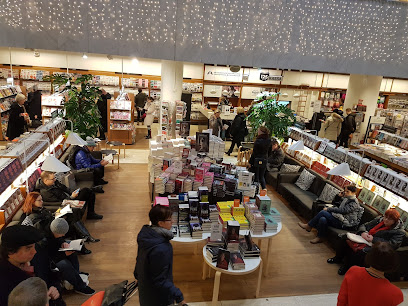
Kluuvi Shopping Centre
Experience the vibrant mix of shopping, dining, and culture at Kluuvi Shopping Centre in the heart of Helsinki, where every visit is an adventure.
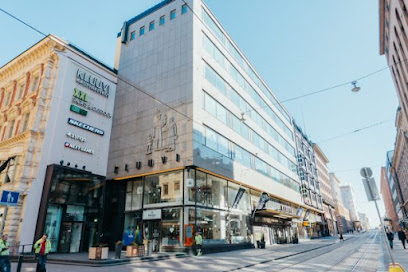
Torikorttelit
Explore Torikorttelit in Helsinki, a vibrant shopping mall blending boutiques, cafes, and rich history for an unforgettable experience.

Helsinki Outlet
Discover unbeatable deals on top brands at Helsinki Outlet, the ultimate shopping paradise for tourists in Finland.
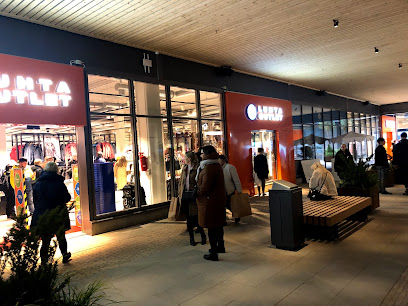
Kämp Galleria
Discover Kämp Galleria: Helsinki's premier shopping mall blending luxury fashion, fine dining, and cultural heritage in one elegant destination.
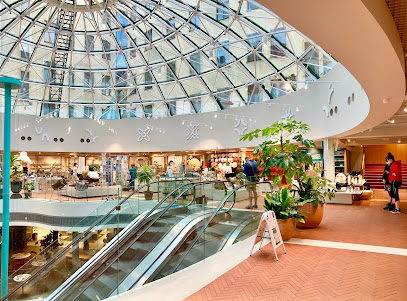
Liikekeskus Ogeli
Discover the best of Helsinki shopping at Liikekeskus Ogeli, where local charm meets modern convenience in a vibrant mall experience.
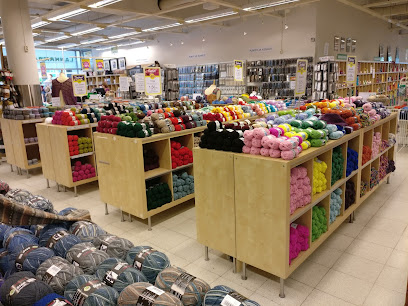
Moomin Shop Lasipalatsi
Explore the whimsical world of Moomins at Moomin Shop Lasipalatsi in Helsinki, where fantasy comes to life through unique gifts and delightful memorabilia.
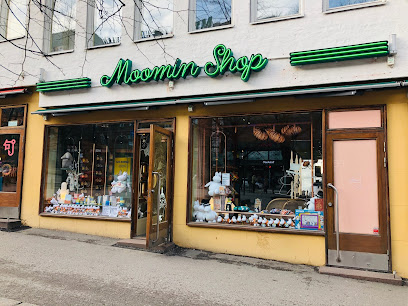
Garageland
Discover Helsinki's Garageland: A Fashion Paradise for Unique Clothing and Shoes in the Heart of Finland's Capital.
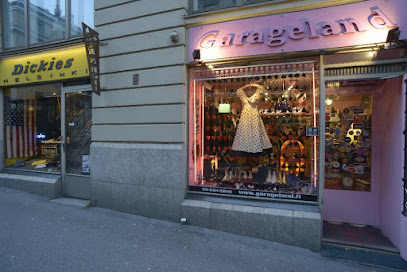
& Other Stories
Discover unique women's fashion and accessories at & Other Stories in Helsinki, a stylish spot for all fashion lovers.
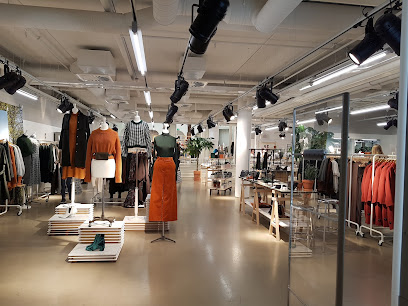
Shop-Tetuan Oy
Explore the vibrant fashion scene at Shop-Tetuan Oy, Helsinki's premier destination for unique clothing and accessories.
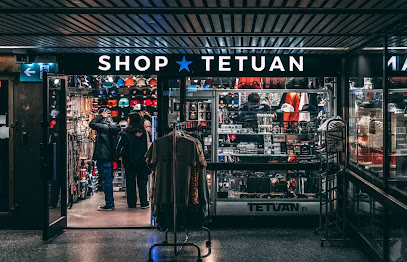
Essential bars & hidden hideouts
Molly Malone's Irish Bar
Discover the warmth and vibrancy of Irish culture at Molly Malone's Irish Bar in Helsinki, serving up authentic food and lively music in a cozy atmosphere.
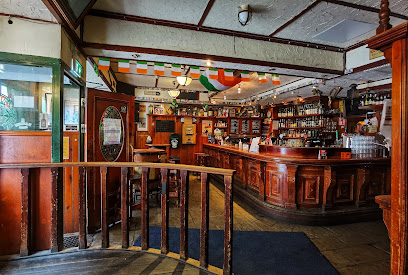
Henry's Pub Helsinki
Experience the lively atmosphere of Henry's Pub, where delicious chicken wings and a wide drink selection await you in the heart of Helsinki.
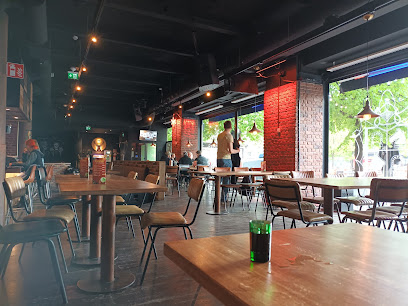
The Riff
Experience the vibrant nightlife of Helsinki at The Riff, a must-visit bar known for its eclectic atmosphere, great music, and diverse drink selection.
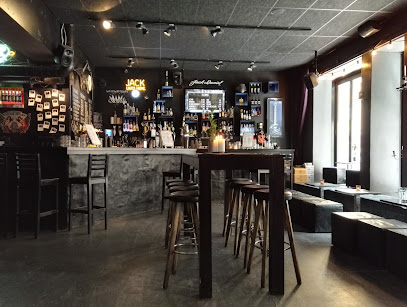
Kitty's Public House
Experience the vibrant atmosphere of Kitty's Public House in Helsinki, where locals and tourists gather for great drinks and hearty meals.
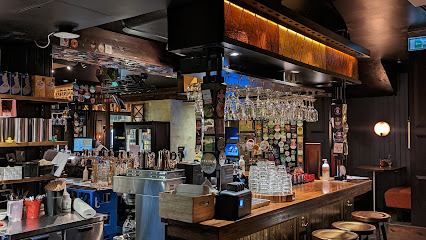
Bar Loose
Experience Helsinki's lively nightlife at Bar Loose, where live music, delicious bites, and a friendly atmosphere await you.

Ateljee Bar
Experience breathtaking views and exquisite cocktails at Ateljee Bar, a luxurious sky-high retreat in the heart of Helsinki.
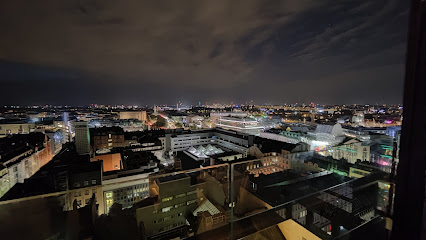
Liberty or Death
Discover Helsinki's vibrant nightlife at Liberty or Death, where exceptional cocktails and a welcoming atmosphere await you.
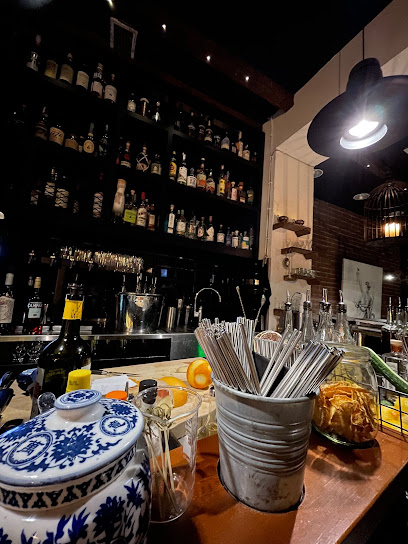
Mummotunneli
Experience the lively atmosphere of Mummotunneli, a cozy bar in Helsinki offering a wide drink selection and a taste of local nightlife.
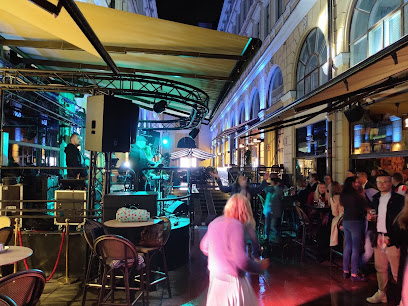
Grotesk Helsinki
Discover Grotesk Helsinki, where innovative cocktails and a vibrant atmosphere create the perfect nightlife experience in the heart of the city.
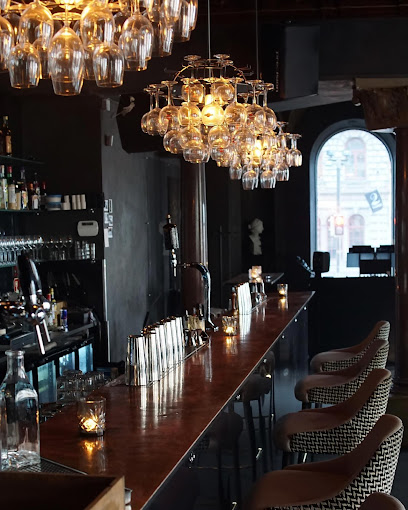
Base Bar
Experience the lively nightlife of Helsinki at Base Bar, where creative cocktails and a vibrant atmosphere await.
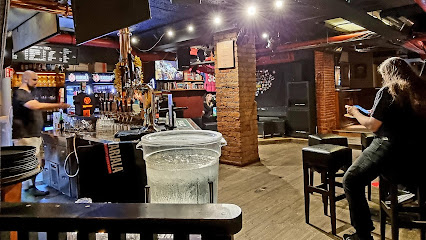
Chihuahua Julep
Discover the vibrant nightlife at Chihuahua Julep, Helsinki's premier cocktail bar, known for its unique drinks and inviting atmosphere.
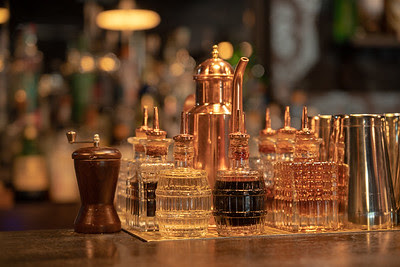
Shot Bar Helsinki
Experience the lively nightlife at Shot Bar Helsinki, where creative shots and an energetic atmosphere await every night.
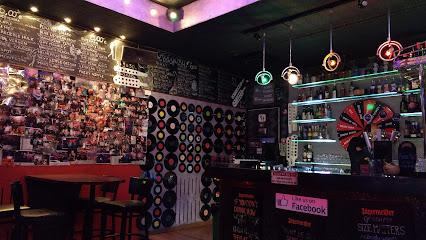
Bar Llamas
Discover Bar Llamas: A lively bar in Helsinki offering a vibrant atmosphere, delicious drinks, and a perfect spot to unwind and socialize.
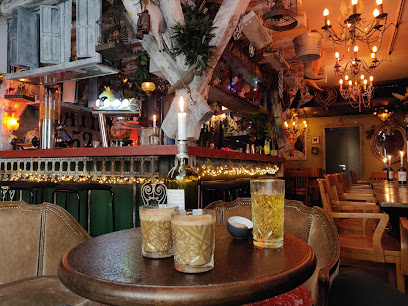
Goldfish Bar
Experience the vibrant nightlife at Goldfish Bar in Helsinki, where expertly crafted cocktails meet a lively atmosphere for an unforgettable evening.
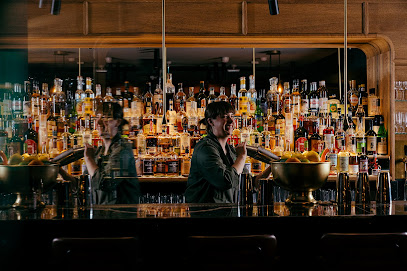
Time Bar
Delight in the lively ambiance and eclectic drink selection at Time Bar, a top spot in Helsinki for nightlife and local culture.

Local Phrases
-
- HelloHei
[hey] - GoodbyeNäkemiin
[nah-keh-meen] - YesKyllä
[kuu-laa] - NoEi
[ay] - Please/You're welcomeOle hyvä
[oh-le huu-vaa] - Thank youKiitos
[kee-tos] - Excuse me/SorryAnteeksi
[ahn-tehk-see] - How are you?Mitä kuuluu?
[mee-taa koo-loo] - Fine. And you?Hyvää. Entä sinä?
[huh-vaa. en-taa see-naa] - Do you speak English?Puhutko englantia?
[poo-hut-koh eng-lan-tee-a] - I don't understandEn ymmärrä
[en um-maa-raa]
- HelloHei
-
- I'd like to see the menu, pleaseSaisinko ruokalistan, kiitos
[sai-sin-koh roo-oh-kah-lee-stahn, kee-tos] - I don't eat meatEn syö lihaa
[en see-oy lee-haa] - Cheers!Kippis!
[kip-pis] - I would like to pay, pleaseHaluaisin maksaa, kiitos
[ha-lu-ai-sin mahk-saa, kee-tos]
- I'd like to see the menu, pleaseSaisinko ruokalistan, kiitos
-
- Help!Apua!
[ah-poo-ah] - Go away!Mene pois!
[meh-neh poys] - Call the Police!Soittakaa poliisi!
[soit-tah-kaa poh-lee-see] - Call a doctor!Soittakaa lääkäri!
[soit-tah-kaa lah-kah-ree] - I'm lostOlen eksyksissä
[oh-len eks-uck-see-sah] - I'm illOlen sairas
[oh-len sai-rahs]
- Help!Apua!
-
- I'd like to buy...Haluan ostaa...
[hah-lu-ahn os-taa] - I'm just lookingKatson vain
[kaat-son vain] - How much is it?Paljonko se maksaa?
[pahl-yon-koh seh mahk-saa] - That's too expensiveSe on liian kallis
[se on lee-ahn kahl-lees] - Can you lower the price?Voitteko laskea hintaa?
[voi-teh-koh lah-say-ah hint-ah]
- I'd like to buy...Haluan ostaa...
-
- What time is it?Kuinka paljon kello on?
[kween-kah pahl-yon kel-lo ohn] - It's one o'clockOn yksi
[ohn uks-ee] - Half past (10)Puoli (10)
[pwoh-lee] - MorningAamu
[ah-moo] - AfternoonIltapäivä
[eelt-ah-pie-vah] - EveningIlta
[eel-tah] - YesterdayEilen
[eye-len] - TodayTänään
[tah-nahn] - TomorrowHuomenna
[hwoh-men-nah] - 1Yksi
[ooks-ee] - 2Kaksi
[kahk-see] - 3Kolme
[kole-meh] - 4Neljä
[nel-yah] - 5Viisi
[vee-see] - 6Kuusi
[koo-see] - 7Seitsemän
[sate-seh-mahn] - 8Kahdeksan
[kah-dek-sahn] - 9Yhdeksän
[uh-dek-sahn] - 10Kymmenen
[kuum-meh-nen]
- What time is it?Kuinka paljon kello on?
-
- Where's a/the...?Missä on...?
[mee-sah ohn] - What's the address?Mikä on osoite?
[mee-kah ohn oh-soi-teh] - Can you show me (on the map)?Voitko näyttää minulle (kartalla)?
[voi-tkoh nye-ttaa min-oo-le (kar-tahl-lah)] - When's the next (bus)?Milloin seuraava (bussi)?
[mil-loin seh-oo-rah-vah (boos-see)] - A ticket (to ....)Lippu (jonnekin)
[leep-poo (yon-ne-keen)]
- Where's a/the...?Missä on...?
History of Helsinki
-
Helsinki was founded by King Gustav I of Sweden in 1550 as a trading town intended to rival the Hanseatic city of Reval (now Tallinn). The original settlement was located at the mouth of the Vantaa River, but it struggled to attract settlers and achieve economic significance.
-
In 1640, Helsinki was relocated to its current location on the southern peninsula by order of Count Per Brahe, the Governor-General of Finland. This move was aimed at providing better access to the sea and improving the town’s prospects. The relocation set the stage for future growth and development.
-
During the Finnish War between Sweden and Russia (1808-1809), Helsinki was occupied by Russian forces. The Treaty of Fredrikshamn in 1809 resulted in Finland being ceded to Russia, and Helsinki became part of the autonomous Grand Duchy of Finland under Russian rule.
-
In 1812, Tsar Alexander I of Russia designated Helsinki as the capital of the Grand Duchy of Finland, replacing Turku. This decision was partly influenced by the need to reduce Swedish influence and to have the capital closer to Saint Petersburg. This marked the beginning of a significant transformation for Helsinki.
-
Under the guidance of German-born architect Carl Ludvig Engel, Helsinki underwent extensive urban development in the neoclassical style. Notable landmarks such as the Helsinki Cathedral, Senate Square, and the Government Palace were constructed during this period, giving the city its distinctive architectural character.
-
The late 19th century saw rapid industrialization in Helsinki, transforming it into a major economic center. Key industries included shipbuilding, metalworking, and textiles. The city’s population grew significantly, and infrastructure improvements were made, including the establishment of a railway network.
-
Following the Russian Revolution, Finland declared independence from Russia on December 6, 1917. Helsinki played a crucial role during the Finnish Civil War (January-May 1918), serving as a stronghold for the Red Guards. The city witnessed intense fighting until it was captured by White Finnish forces with German assistance.
-
Helsinki faced significant challenges during World War II, including bombings by Soviet forces. Despite the destruction, the city managed to preserve much of its architectural heritage. Post-war reconstruction efforts focused on rebuilding and modernizing the city, laying the groundwork for future growth.
-
The 1952 Summer Olympics were held in Helsinki, marking a significant milestone in the city's history. The event showcased Helsinki to the world and symbolized Finland’s recovery from the war. The Olympic Stadium and other sports facilities built for the games remain important landmarks.
-
In recent decades, Helsinki has evolved into a vibrant, modern city known for its design, technology, and cultural scene. The city has hosted numerous international events and has been recognized as a UNESCO City of Design. Key developments include the construction of the Kamppi Center and the expansion of the Helsinki metro.
Helsinki Essentials
-
Helsinki is accessible via Helsinki-Vantaa Airport (HEL), which is about 20 kilometers north of the city center. The airport is well-connected with direct flights from major cities around the world. Alternatively, you can arrive by ferry from Tallinn, Stockholm, and other Baltic Sea ports. Helsinki is also connected by train to other Finnish cities and Saint Petersburg, Russia.
-
Helsinki has an efficient public transportation system that includes buses, trams, metro, and ferries. The Helsinki Card offers unlimited travel on public transport as well as free entry to many attractions. Biking is also popular, with numerous bike rental options and well-maintained bike lanes. Taxis and ride-sharing services like Uber are available, but they can be expensive.
-
The official currency in Finland is the Euro (EUR). Credit and debit cards are widely accepted, and mobile payments are common. ATMs are readily available, and cash is not frequently used. It's advisable to carry a small amount of cash for places that may not accept cards, especially in more remote areas.
-
Helsinki is generally a safe city with low crime rates. However, like any major city, it's wise to stay vigilant, especially in crowded areas like train stations and tourist spots. Avoid areas such as the East Pasila neighborhood late at night, as it has been known for occasional petty crime. Always keep an eye on your belongings to avoid pickpocketing.
-
In case of emergency, dial 112 for police, fire, or medical services. Helsinki has well-equipped hospitals and pharmacies. It's advisable to have travel insurance that covers medical emergencies. Pharmacies are widespread and often open late. For non-emergency medical issues, local clinics and health centers are available.
-
Fashion: Do dress in layers, as the weather can change rapidly. Casual but neat attire is generally acceptable. Religion: Do respect local customs, but note that Finland is largely secular. Public Transport: Do validate your ticket before boarding, and give up your seat for elderly passengers. Don't talk loudly on your phone. Greetings: Do greet people with a handshake and maintain eye contact. Eating & Drinking: Do try local foods like reindeer and salmon. Don't tip, as service charges are usually included in the bill.
-
To experience Helsinki like a local, visit the various open-air markets such as the Market Square (Kauppatori) for fresh produce and Finnish delicacies. Enjoy a sauna experience, which is a significant part of Finnish culture. Explore the lesser-known neighborhoods like Kallio for its vibrant arts scene and unique cafes. Don't miss the chance to take a ferry to the nearby Suomenlinna Fortress, a UNESCO World Heritage site.
Trending Landmark in Helsinki
Nearby Cities to Helsinki
-
Things To Do in Espoo
-
Things To Do in Porvoo
-
Things To Do in Tallinn
-
Things To Do in Lahti
-
Things To Do in Rakvere
-
Things To Do in Rapla
-
Things To Do in Paide
-
Things To Do in Turku
-
Things To Do in Haapsalu
-
Things To Do in Tampere
-
Things To Do in Jõhvi
-
Things To Do in Kärdla
-
Things To Do in Pärnu
-
Things To Do in Viljandi
-
Things To Do in Tartu


















